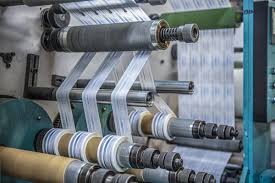Revolutionizing Material Processing: The Strategic Role of Die-Cutting Machinery in Enhancing Precision, Efficiency, and Innovation in Modern Manufacturing Industries
Die-cutting machinery is an integral part of the manufacturing industry, playing a pivotal role in shaping, forming, and cutting materials with precision and efficiency. This type of machinery is widely used across various sectors, including packaging, automotive, textiles, and electronics, demonstrating its versatility and essential function in production processes. This article explores the evolution, functionality, and benefits of die-cutting machinery, highlighting its significance in today’s industrial landscape.
Understanding Die-Cutting Machinery
Die-cutting is a specialized process that involves using a die—a metal-shaped tool—to cut, form, or shape materials, typically sheet or web materials. The machinery is designed to handle a wide range of materials such as paper, cardboard, rubber, plastic, and metal, making it a fundamental tool in many manufacturing workflows.
Types of Die-Cutting Machines
- Flatbed Die Cutters: These machines are suitable for low to medium-volume production and are known for their precision in cutting thicker materials. Flatbed die cutters use a hydraulic press to force the die through the material on a flat surface.
- Rotary Die Cutters: Designed for high-volume production, rotary die cutters feature cylindrical dies that rotate to cut material quickly and continuously. This type is prevalent in the packaging industry, especially for creating custom-shaped boxes and labels.
- Digital Die Cutters: Utilizing advanced technology, digital die cutters do not require a physical die. Instead, they use a laser or a blade guided by computer software to cut material. This allows for quick changes between jobs and is ideal for short-run projects with high complexity.
Technological Advancements
The evolution of die-cutting technology has led to significant improvements in speed, accuracy, and versatility. Modern die-cutting machines are equipped with computer-controlled systems that allow for precise adjustments and minimal material waste. Automation in die-cutting not only speeds up the manufacturing process but also enhances repeatability and reduces labor costs.
Applications and Benefits
- Packaging Industry: Die-cutting machines are essential for creating custom packaging solutions, offering the flexibility to produce unique designs that meet specific customer requirements.
- Automotive Sector: In the automotive industry, die-cutting is used to fabricate parts such as gaskets, seals, and various interior components, where precision and durability are crucial.
- Textiles and Apparel: For textiles, die-cutting facilitates the production of complex fabric patterns and designs, contributing to both functional and aesthetic elements of the final product.
Environmental Impact and Sustainability
As industries increasingly focus on sustainable practices, die-cutting machinery manufacturers are adapting by developing systems that minimize scrap and energy use. Additionally, the ability to precisely cut materials reduces waste, making the process more environmentally friendly and cost-effective.
Challenges and Future Outlook
Despite its many benefits, the die-cutting industry faces challenges such as the high initial investment in machinery and the ongoing need for maintenance. However, the future looks promising with continuous innovations such as the integration of IoT and AI technologies, which promise to enhance operational efficiency and predictive maintenance capabilities.
Die-cutting machinery continues to be a critical component in manufacturing, shaping the production landscape with its dynamic capabilities and adapting to the demands of a rapidly evolving market. As technology progresses, die-cutting will undoubtedly continue to offer new solutions and improvements, reinforcing its essential role in modern manufacturing.



